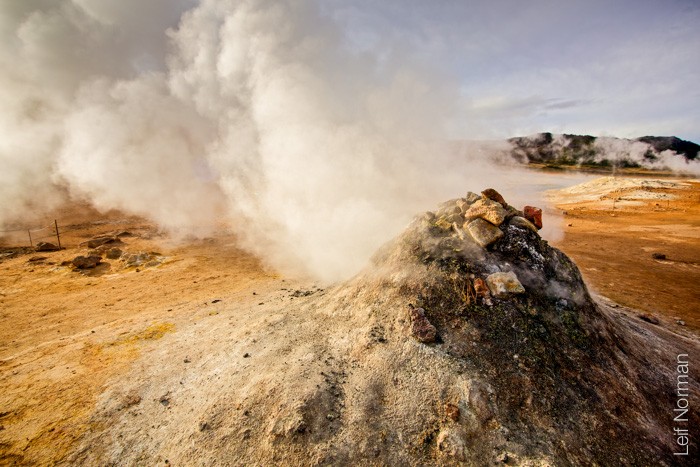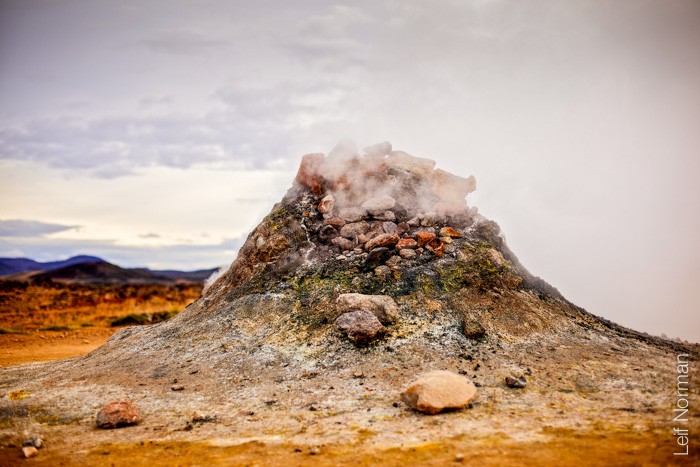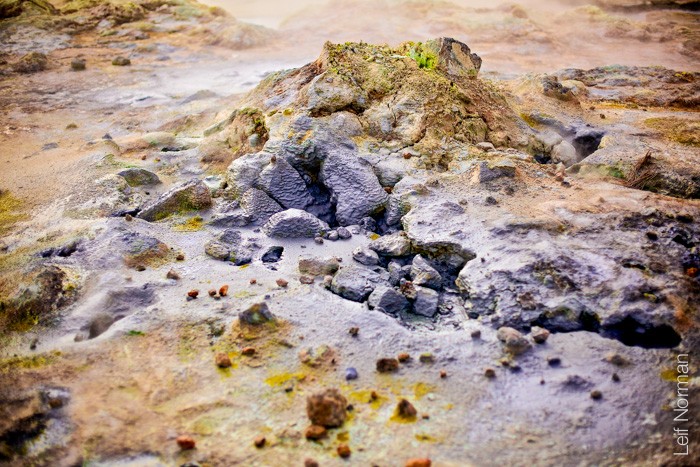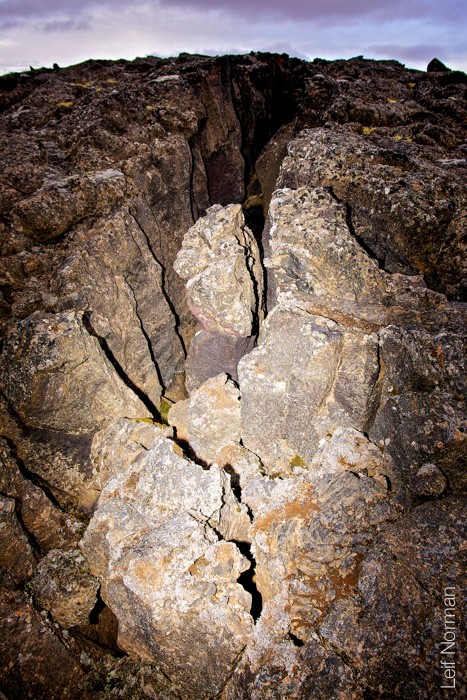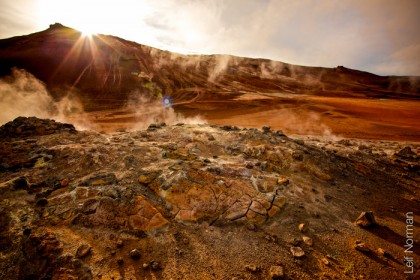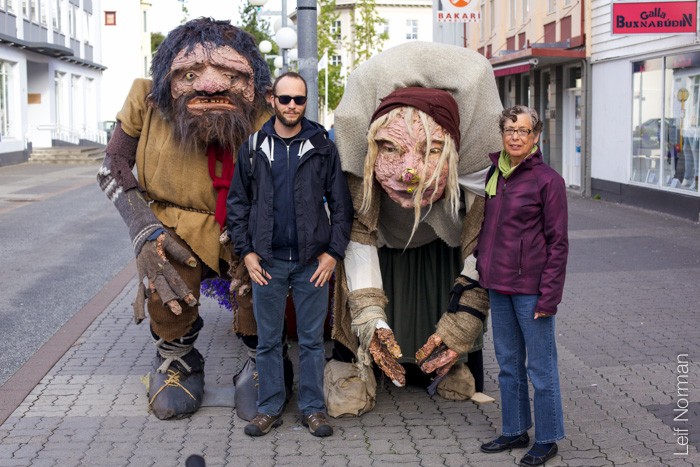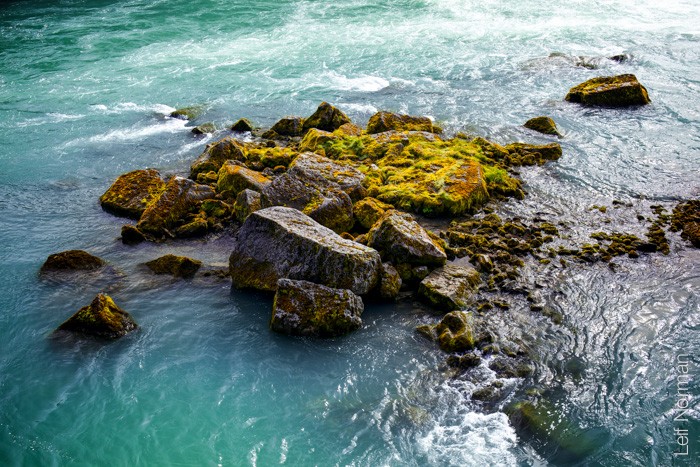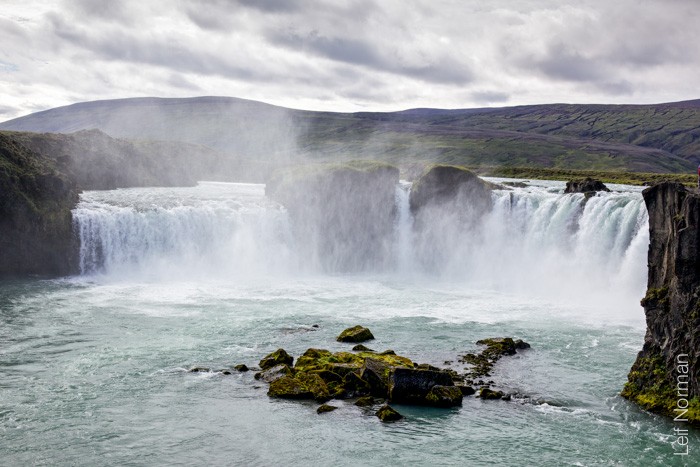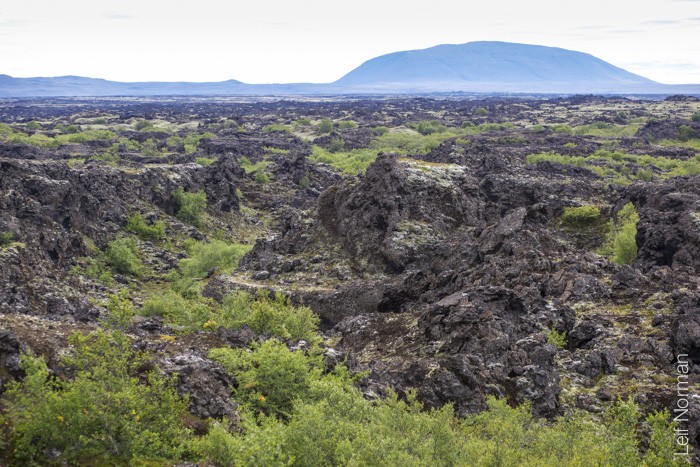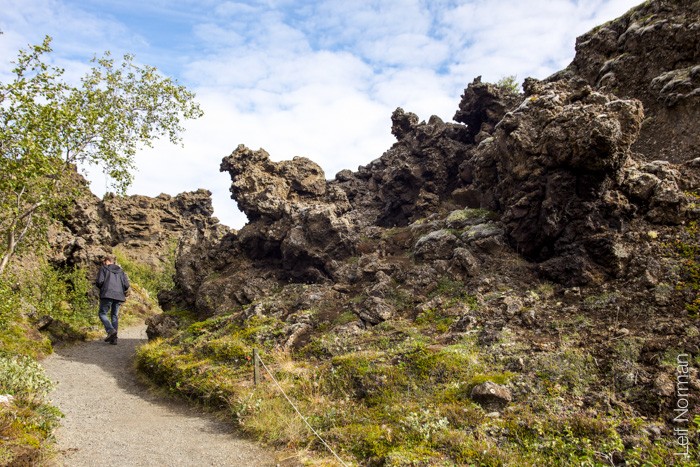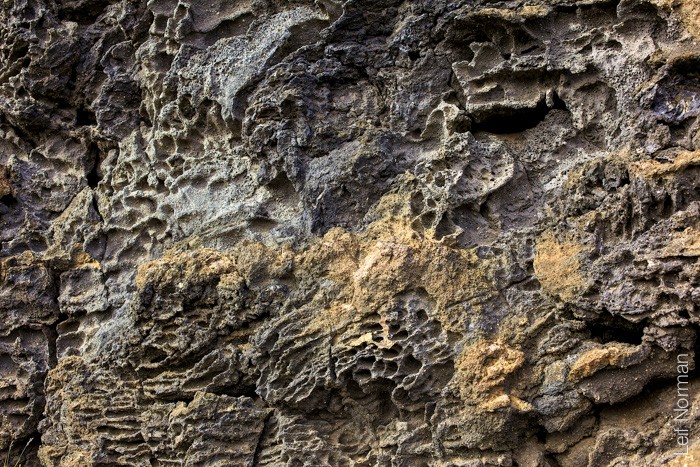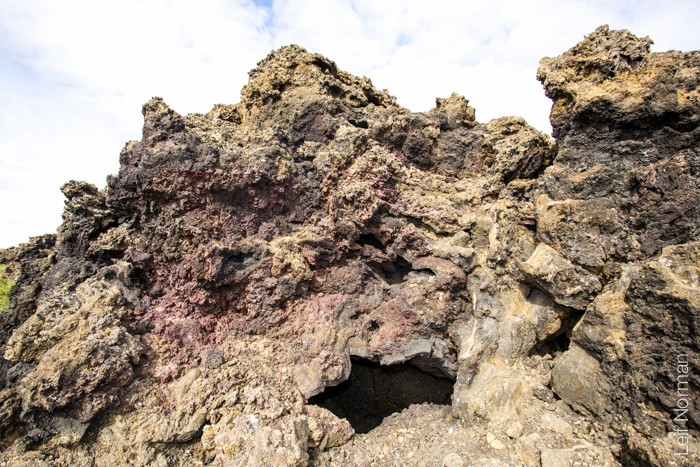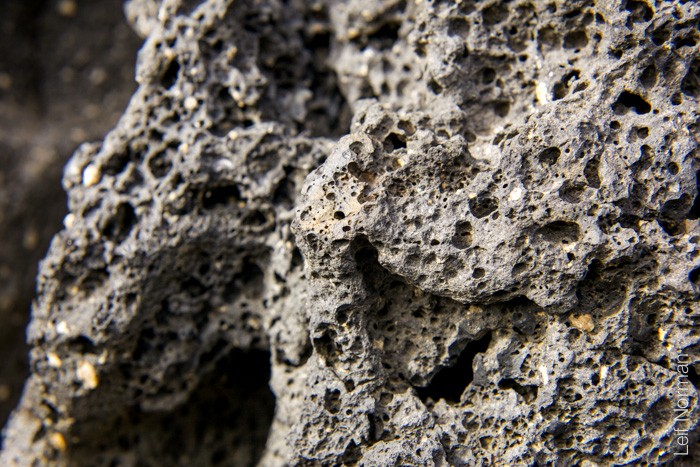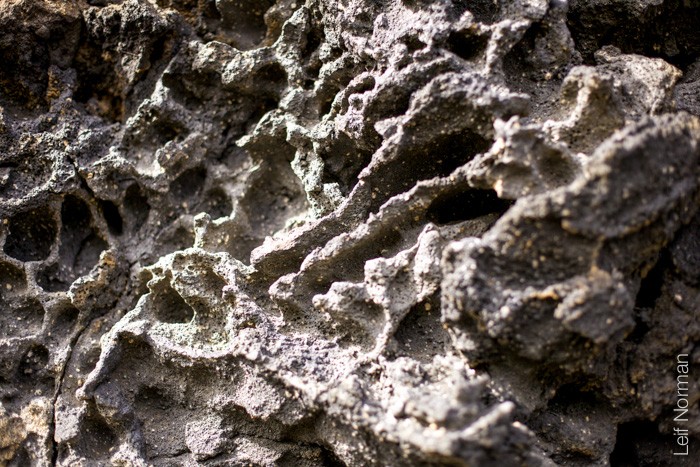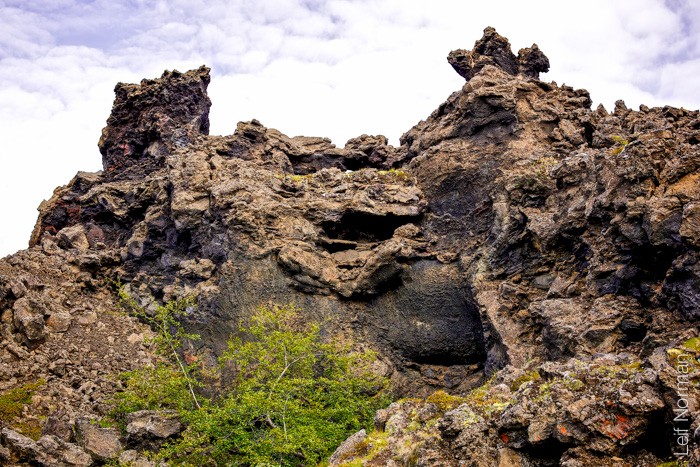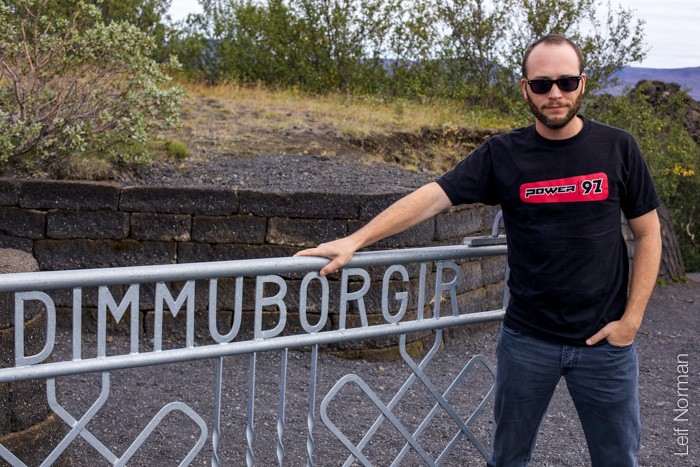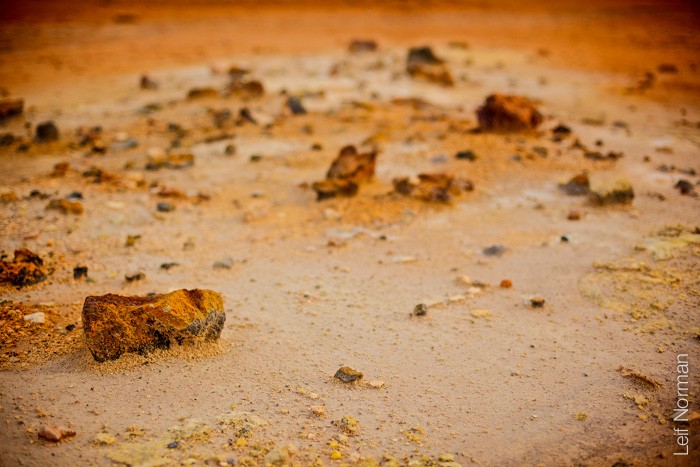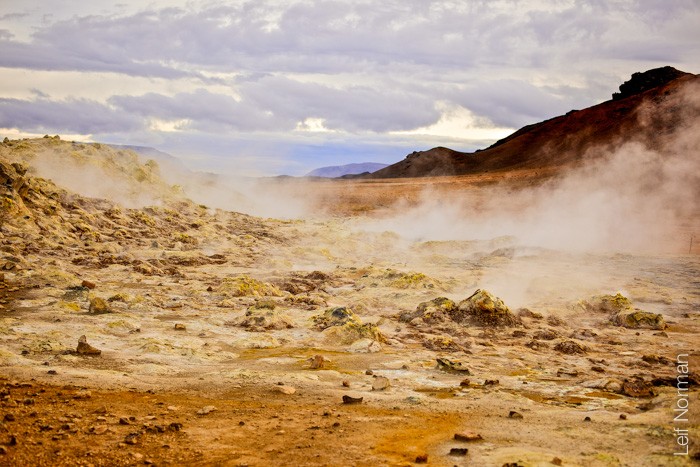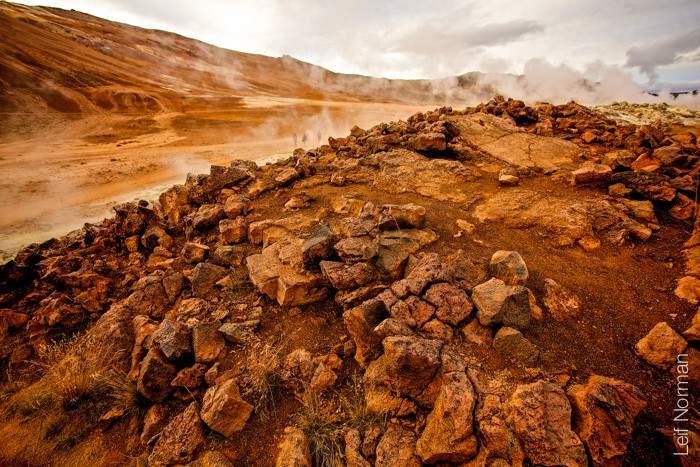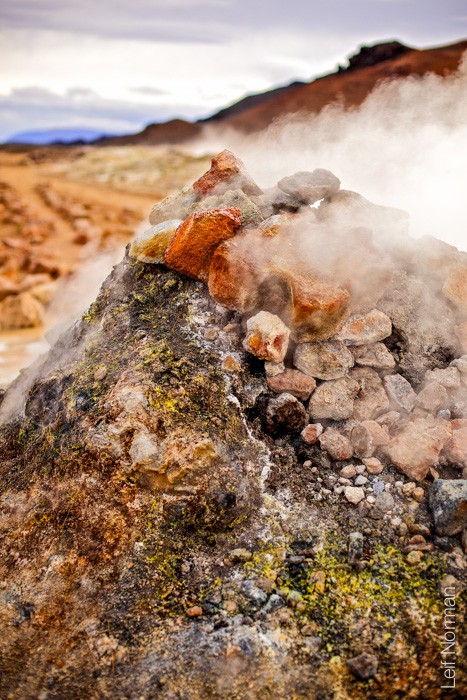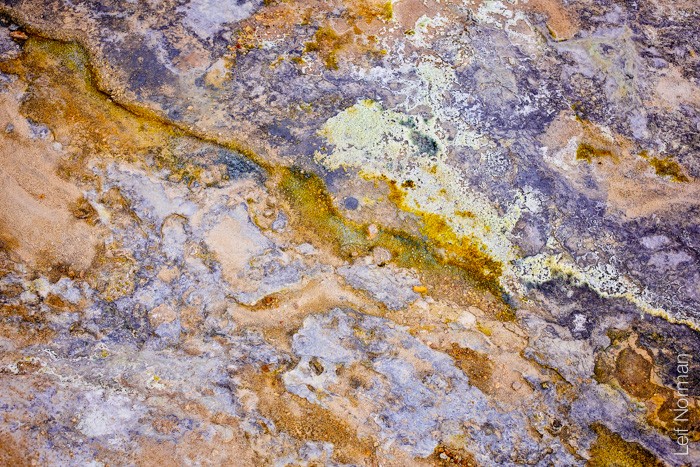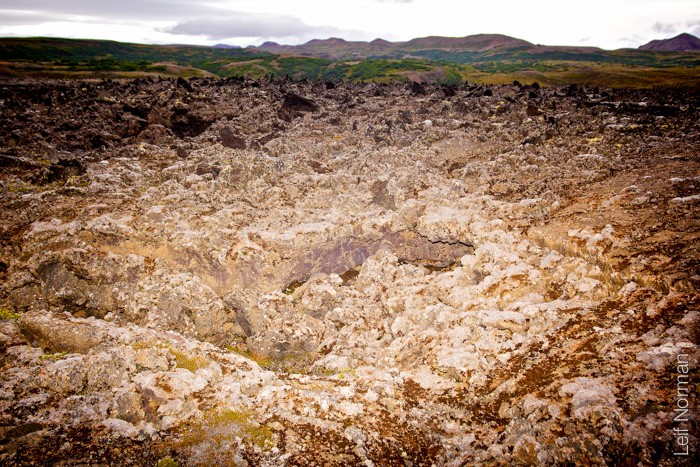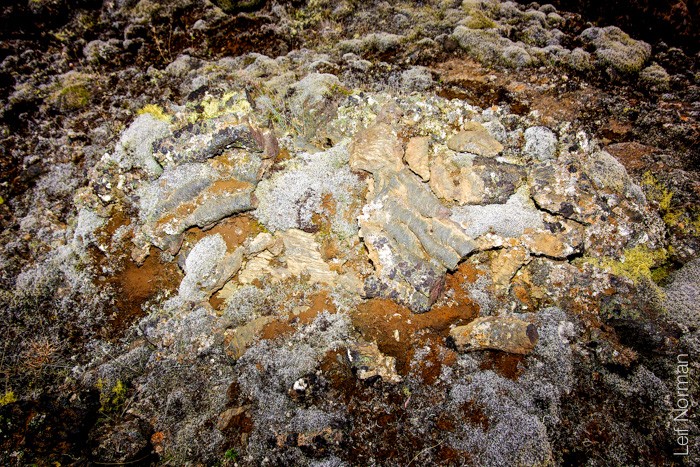Akureyri to Lake Myvatn, with Dimmuborgur and the steaming fumaroles and mud pools of Namaskard on the way.

“The Goðafoss (Icelandic: waterfall of the gods or waterfall of the goði) is one of the most spectacular waterfalls in Iceland. It is located in the Bárðardalurdistrict of North-Central Iceland at the beginning of the Sprengisandur highland road. The water of the river Skjálfandafljót falls from a height of 12 meters over a width of 30 meters.
In the year 999 or 1000 the Lawspeaker Þorgeir Ljósvetningagoði made Christianity the official religion of Iceland. After his conversion it is said that upon returning from the Alþingi, Þorgeir threw his statues of the Norse gods into the waterfall. Þorgeir’s story is preserved in Ari Þorgilsson‘s Íslendingabók.
A window in the Cathedral of Akureyri (Akureyrarkirkja) illustrates this story.
MS Goðafoss, an Icelandic ship named after the waterfall, was carrying both freight and passengers. It was sunk by a German U-Boat in World War II, resulting in great loss of lives.” from Wikipedia
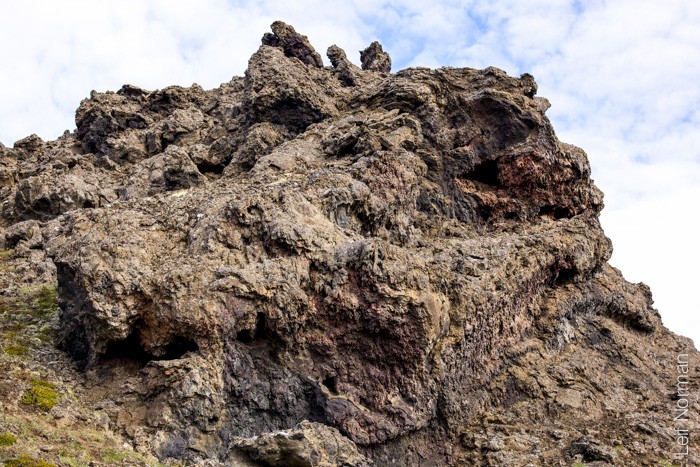
“Dimmuborgir (dimmu “dark”, borgir “cities” or “forts”, “castles”); pronounced [tɪmʏpɔrcɪr]) is a large area of unusually shaped lava fields east of Mývatnin Iceland. The Dimmuborgir area is composed of various volcanic caves and rock formations, reminiscent of an ancient collapsed citadel (hence the name). The dramatic structures are one of Iceland’s most popular natural tourist attractions.” from Wikipedia

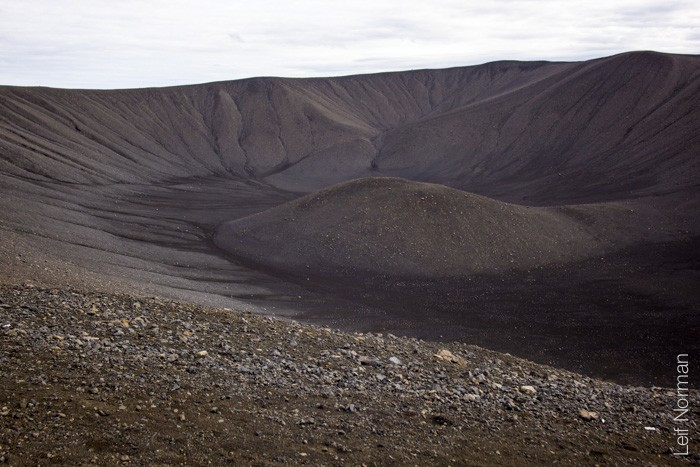
“Hverfell is an explosion crater on the east side of Lake Myvatn in northern Iceland and is one of the largest explosion craters in the world.
The diameter of the crater is 1000 meters and it is around 140 metres deep. It was formed in a volcanic explosion some 2800-2900 years ago.” from http://www.northiceland.is/en/other/place/hverfell
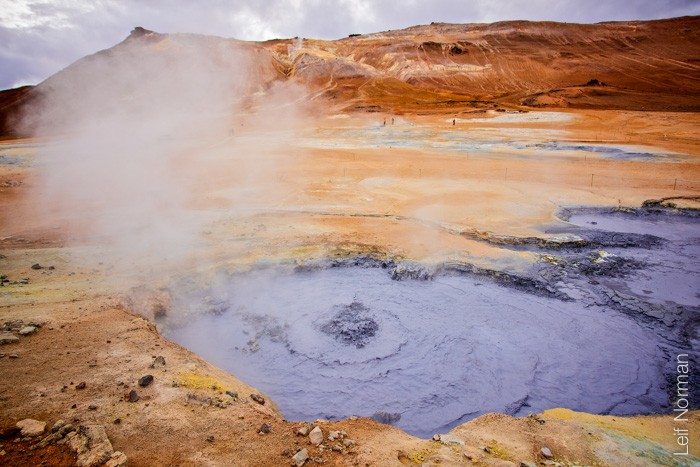
“The mud of a mudpot takes the form of a viscous, often bubbling, slurry. As the boiling mud is often squirted over the brims of the mudpot, a sort of mini-volcano of mud starts to build up, sometimes reaching heights of 3–5 feet. Although mudpots are often called “mud volcanoes”, true mud volcanoes are very different in nature. The mud of a mudpot is generally of white to greyish color, but is sometimes stained with reddish or pink spots from iron compounds. When the slurry is particularly colorful, the feature may be referred to as a paint pot.” from Wikipedia
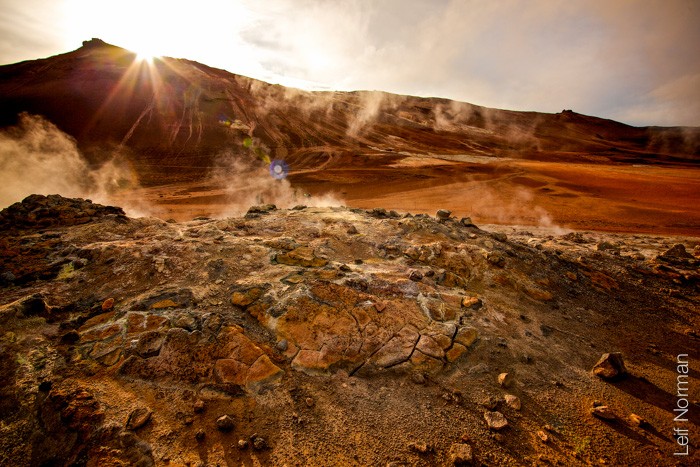
“A fumarole (Latin fumus, smoke) is an opening in a planet’s crust, often in the neighborhood of volcanoes, which emits steam and gases such as carbon dioxide, sulfur dioxide, hydrogen chloride, and hydrogen sulfide. The steam is created when superheated water turns to steam as its pressure drops when it emerges from the ground. The name solfatara, from the Italian solfo, sulfur (via the Sicilian dialect), is given to fumaroles that emit sulfurous gases.
Fumaroles may occur along tiny cracks or long fissures, in chaotic clusters or fields, and on the surfaces of lava flows and thick deposits of pyroclastic flows. A fumarole field is an area of thermal springs and gas vents where magma or hot igneous rocks at shallow depth are releasing gases or interacting with groundwater. From the perspective of groundwater, fumaroles could be described as a hot spring that boils off all its water before the water reaches the surface.” from Wikipedia
